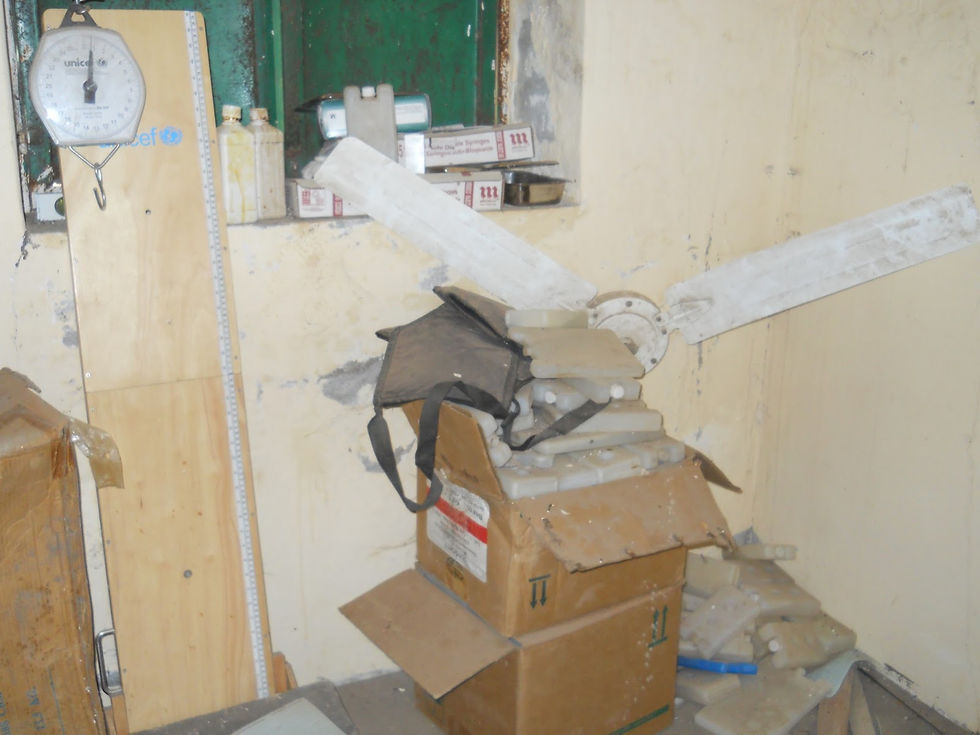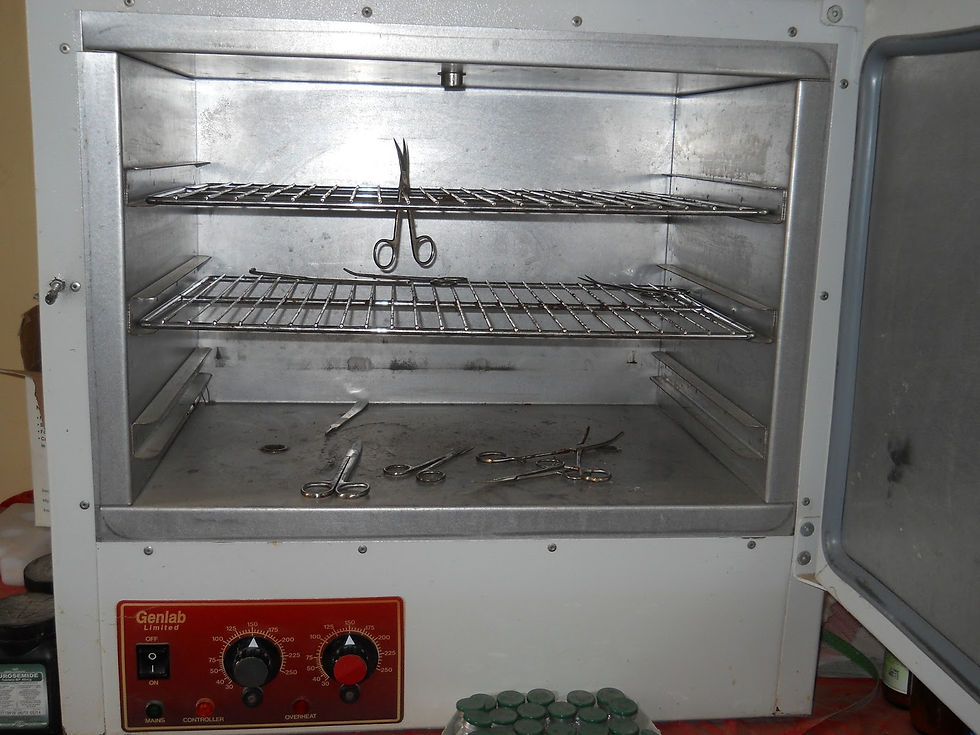Mirmir Outreach Clinic under the Bieh Tree
- kwankew
- Apr 29, 2013
- 4 min read
For breakfast we stood around a table making tea from some powder and had a greasy bun together with the busy flies swarming over the table. Then off we drove north to Mirmir, forty minutes away. It is a dusty village with its main road lined with stores selling staples of oil, salt, sugar, rice…
The Mirmir PHCC’s name is in Arabic run by the Ministry of Health of South Sudan. Off to one side there was a particularly big shady tree sending buttress- like roots into the earth, reminiscent of the Banyan tree. William the CHW, called it the Bieh tree.

The fence around the clinic was broken down although its gate remained standing. A few patients sat on broken benches waiting to be seen. The Mirmir PHCC is a U-shaped structure in a state of disrepair.It has two wards, a solar room, pharmacy, storage room and an OPD (outpatient Department) .There is only a community health worker, Willaim here. Ward 1 has two beds lined with cardboard as mattress, on one of beds was a woman receiving IV fluid. The floor has been doused with providone iodine and purple chlorhexidine and it bears the staining of the cleansing agents. The workers had been trying to clean the place upon hearing that we would be coming. The solar room was going to be used by Bonnie to examine the pregnant women but it reeks of urine, the big fridge there has not been working for a while. The pharmacy’s shelves are ninety-five percent empty and it lacks important medicines: ORS for diarrhea, Coartem (artemether-lumefantrine) for malaria, paracetamol for fever and pain…The storage room was locked and later we found that it contains a lot of magnesium trisilicate for acid reflux, gloves, water for injection and not much more. The OPD was swept recently and its non-functioning autoclave contains a few rusty clamps. Ward 2 is used to do Rapid Detection Test for malaria and not much more, it is stacked with a combination of trash and boxes of supplies and a bed lined with cardboard with an IV hung from one of the blades of a broken ceiling fan.









Confronting with this sad state of affair, Johnson took a long thoughtful look at the shady tree and decided that we would set our mobile clinic there. There followed a flutter of activities to move tables, chairs, benches, an exam table and some screens. The threatening clouds gathered but it did not rain, there was a brisk cool breeze. Many children climbed up the tree like monkeys picking small grape-like fruits to eat. Goats foraged for food under and around the trees. Children and goats alike were hungry. The children were barely clothed in dirty rags but the Bieh tree which became our clinic was also their playground, the roots were their swing sets. With the lack of useful medicines, Johnson sent Juma to Koch County Hospital, an hour away to get medicines, however when he arrived there the boxes were so chaotically stashed, no one could find the needed medicines in a reasonable amount of time to bring to our clinic. Instead he brought the recently appointed county health director, Michael Kuoak and his entourage to tour the place for the first time. Then we learned that the staff at the Mirmir PHCC which is run by the Ministry of Health of South Sudan not by any NGO had been running the clinic without being paid for “a long time” that is when the oil stopped flowing. Recently the oil starts flowing, they are still not factored into the budget of the government. Despite requests for certain medications to the government the staff at Mirmir kept on receiving tons of Magnesium Trisilicate because the boxes of supplies were so disorderly stashed at the Koch County Hospital, no one could find anything that they needed. That also explained why they wanted to be paid for interpreting for us. Johnson said that he could only give them payment-in-kind such as salt, sugar, etc. however he was thinking of giving them a small amount of cash. What the new County Director could do is beyond me. He has no vehicle to travel around and visit the PHCC that he is to oversee and no budget to pay them. Fuel remains very expensive despite this being an oil-rich country. World Relief hopes to take over the Mirmir Clinic which will give hopes of reviving this place and making it better.
While I continued to see children with diarrhea, we could only teach the mothers to make home-made ORS. Bonnie did her child-birth education for the mothers-to be and some young women. As we ended our clinic the wind picked up and whipped up a sand storm.
Back in the compound in Leer, I took a walk into the village as the day became cooler. Two children with tops made from plastic bags greeted me but their shirts were not breathable and must be tremendously hot to wear. I gestured to a woman to ask if I could get inside her tukul. There was hardly any belongings there, some dry corns and sorghum, a health card attached to one of the stalks that was the roof and bits of clothing hanging. The bed was outside under the tree; in the yard was a fenced structure for the animals. She was sitting on the dirt mending her fence with thorny fronds from a palm. I walked by children playing in a pool of muddy water, a group of iron forger making spoons and ladles under a Neem tree and goats and rams foraging on the dry stumps of grass as they were heading home. A group of children fashioned realistic looking mud animal figurines and even a fenced structures with houses and animals. They were very well made.



Tonight was cloudy, no spectacular display of stars. The moon shone brightly later in the night. The breeze finally came as the crickets which lodged themselves on my bed net chirped most of the night while a fire fly blinked on the dirt floor. The ibises were silent till dawn when they made a tremendous raucous cawing to wake us all up.






Komentar